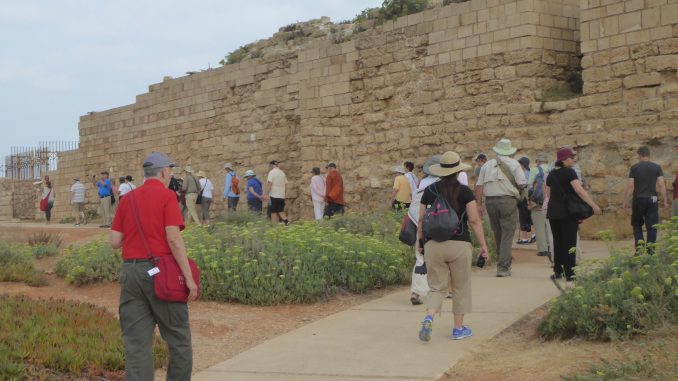
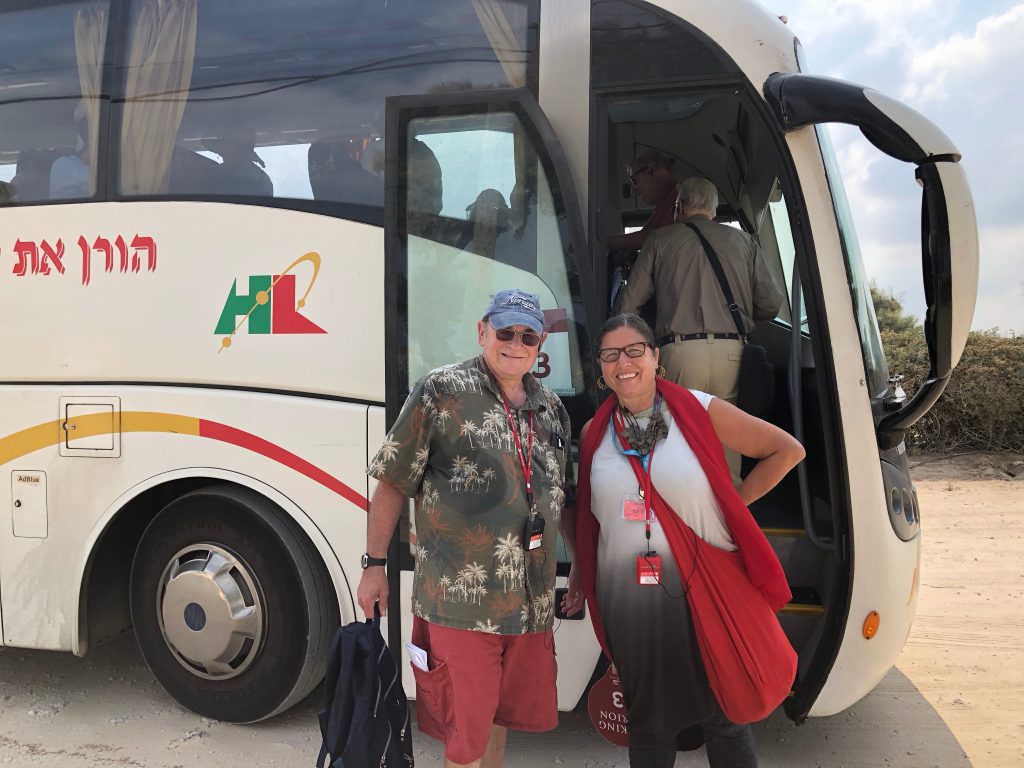
Haifa, Caesarea, Jaffa, and Tel Aviv in one day! That’s what we saw and experienced on an optional tour offered by Viking Ocean Cruises as part of our Passage to India trip in August-September, 2018.
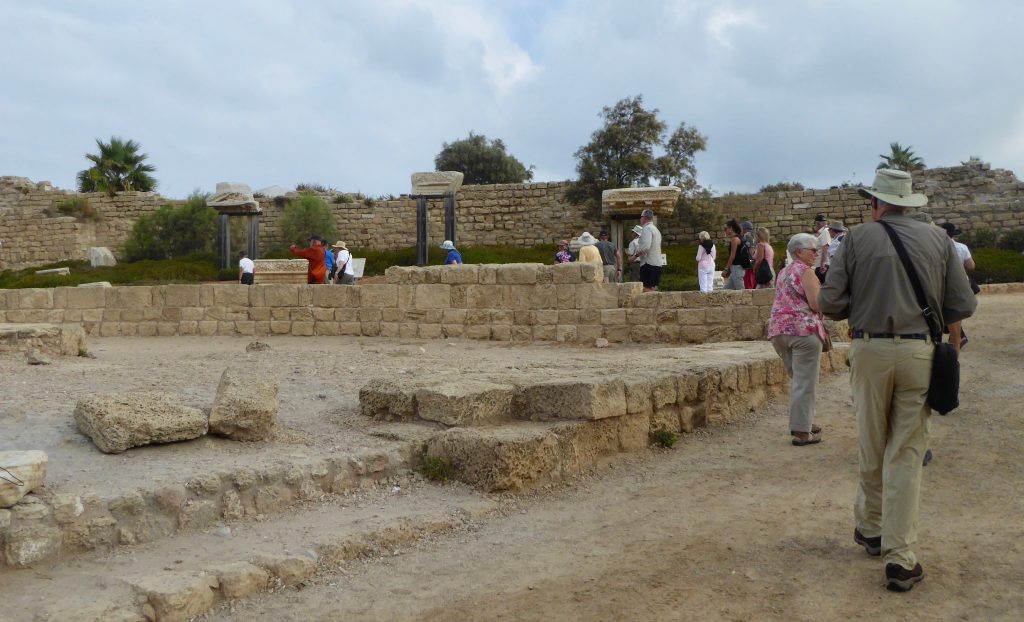
Caesarea located along the Mediterranean coast of Israel, was our first stop on our bus tour. The city is a microcosm of the changes and turmoil in that area throughout the centuries. This seaside city was constructed by Herod the Great in 25 BCE and became the Roman capital of the Jewish province of Judea. Over 40,000 people lived there when it was the home of Herod and eventually Pontius Pilate.
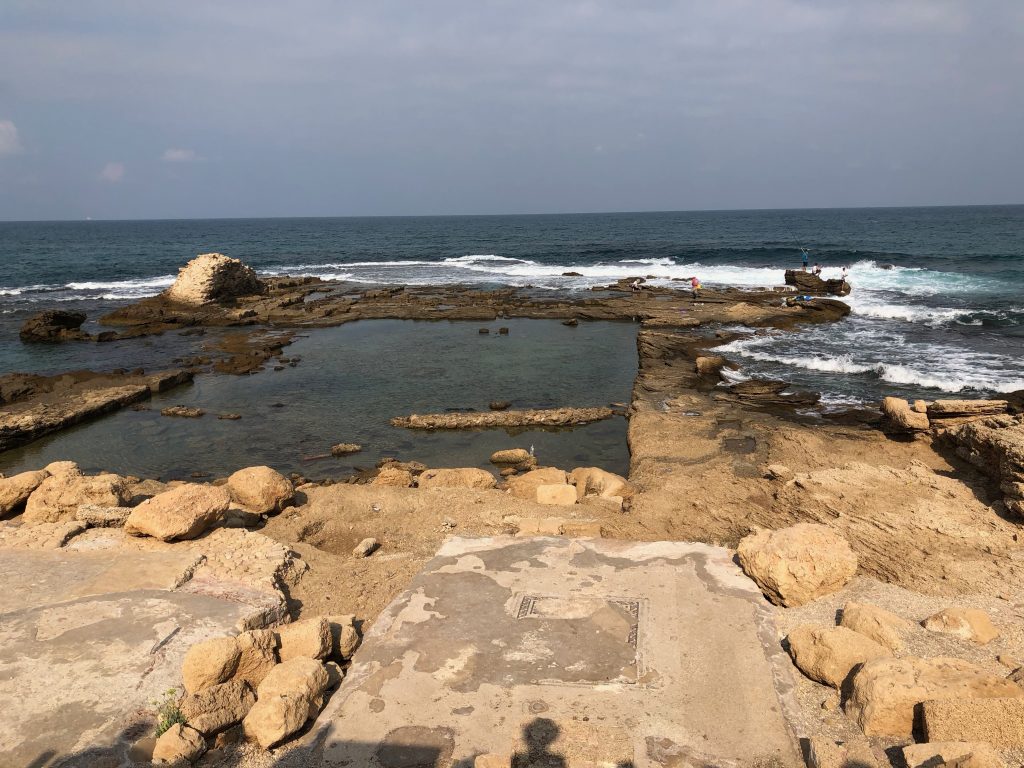
The original city was classic Roman. We saw the remains of the deep water port, special flood control, amphitheater, a hippodrome for chariot races, and traditional Roman baths. Herod spared no expense in the city’s construction. His original palace contained high-end marble imported from Egypt and other countries.

Our guide Shiri filled us in on some of the history. As Rome began to decay, so did Caesarea. It became part of the Byzantine Empire and then was conquered by the Arabs in 630CE. By the time the Crusaders won control in 1100, the population had dropped to 5,000. The Crusaders constructed a huge moat and wall around the city, part of which still stands. The Marmaluke Arabs recaptured the city in 1265 and destroyed much of it. The Ottoman Turks took control in 1650.
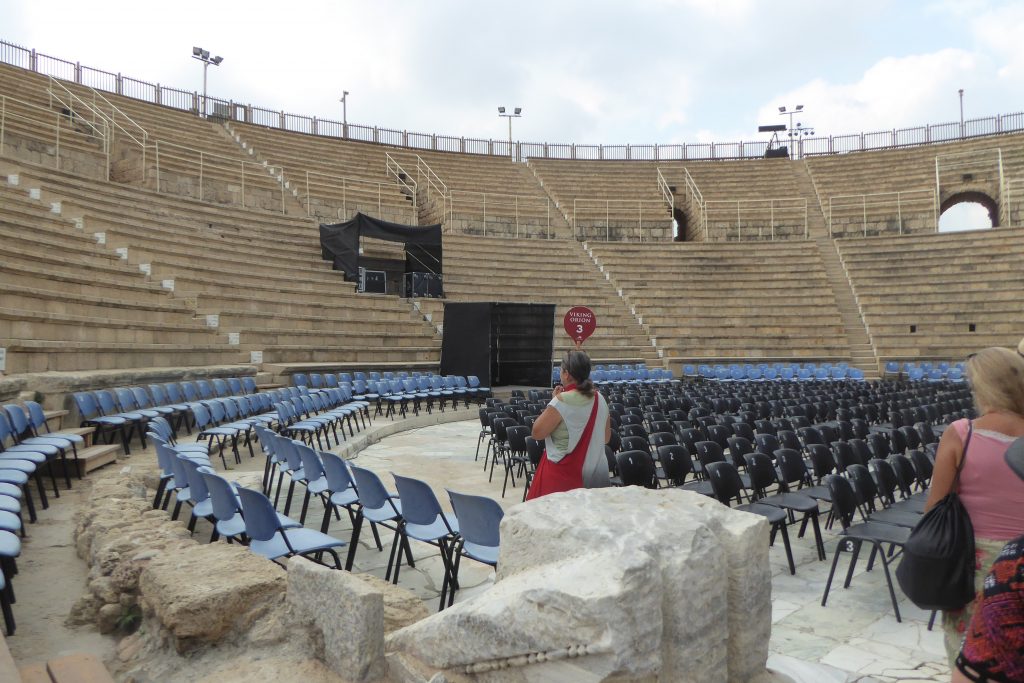
The area lay dormant until 1900, when Baron Rothschild bought the land and began renovations. Much of the ancient city has been restored and excavations continue. The centerpiece is the reconstructed 3,000 seat amphitheater which is used by Israelis for outdoor concerts. In fact, light and sound preparations were being completed at the amphitheater when we toured in August 2018. We climbed some of the steps and sat down, picturing an amphitheater filled with Judeans in ancient times. Much of the surrounding area is still owned by the Rothschild family and boasts modern upscale housing.
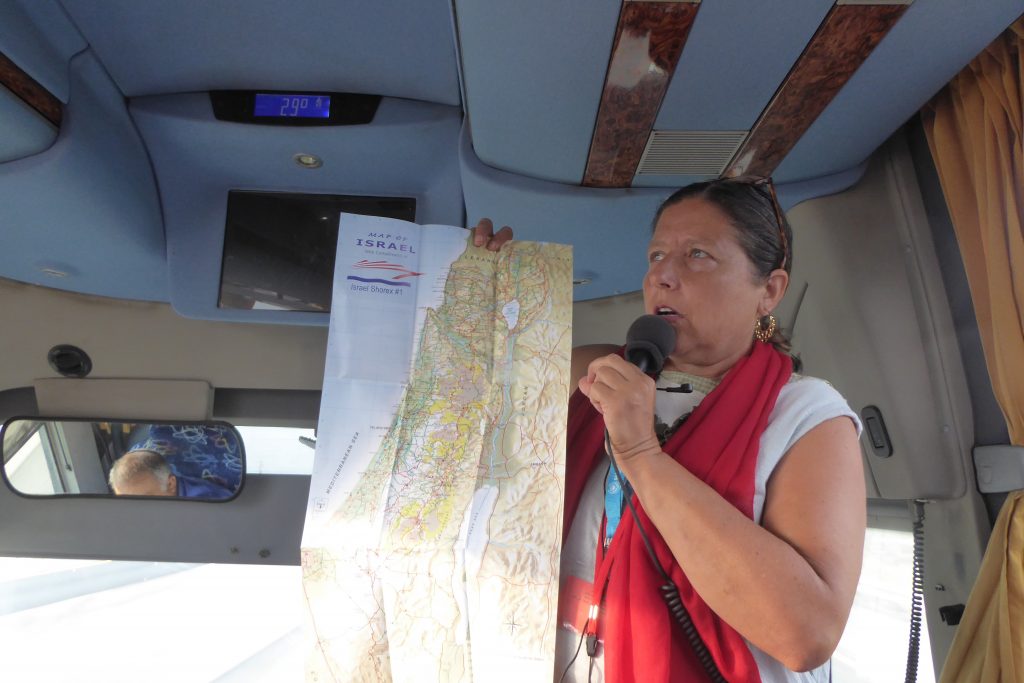
Our drive south on Highway 2 toward Jaffa took us through the modern city of Tel Aviv. This once sleepy town was established by Jewish settlers in 1909. Driving along the freeway, visitors could think they were in Silicon Valley noticing buildings with Microsoft and Intel signs. Shiri emphasized the strong connection between Israeli and United States tech firms.
We drove down tree-lined boulevards and traveled through the resort section of Tel Aviv. It lies on the Mediterranean and offers an abundance of hotel accommodations.

Next, we entered the predominantly Arab area of Jaffa which is now part of Tel Aviv. There is much history here. It was initially an Arab city until conquered by the Turks. Napoleon destroyed much of the city, but it was rebuilt by the Turks after his defeat. It was an all Arab city until 1948 when Israel gained statehood and many Jewish people moved into the area.
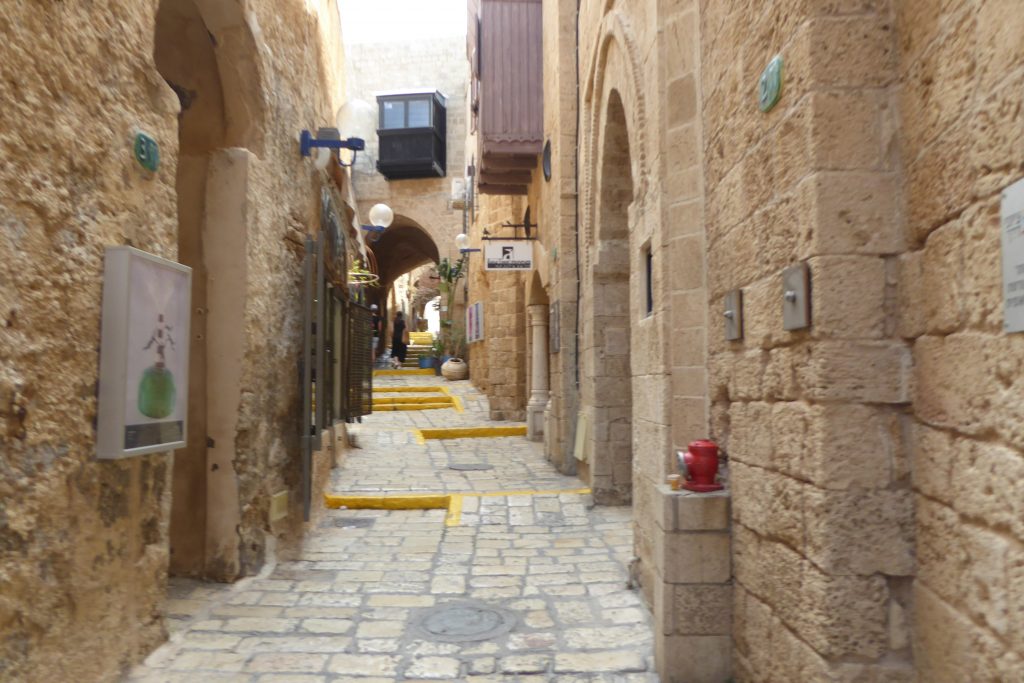
Jaffa now is a residential area, but contains a large artist colony in the rebuilt section. We visited a shop where some of our group bought jewelry created by local artisans.


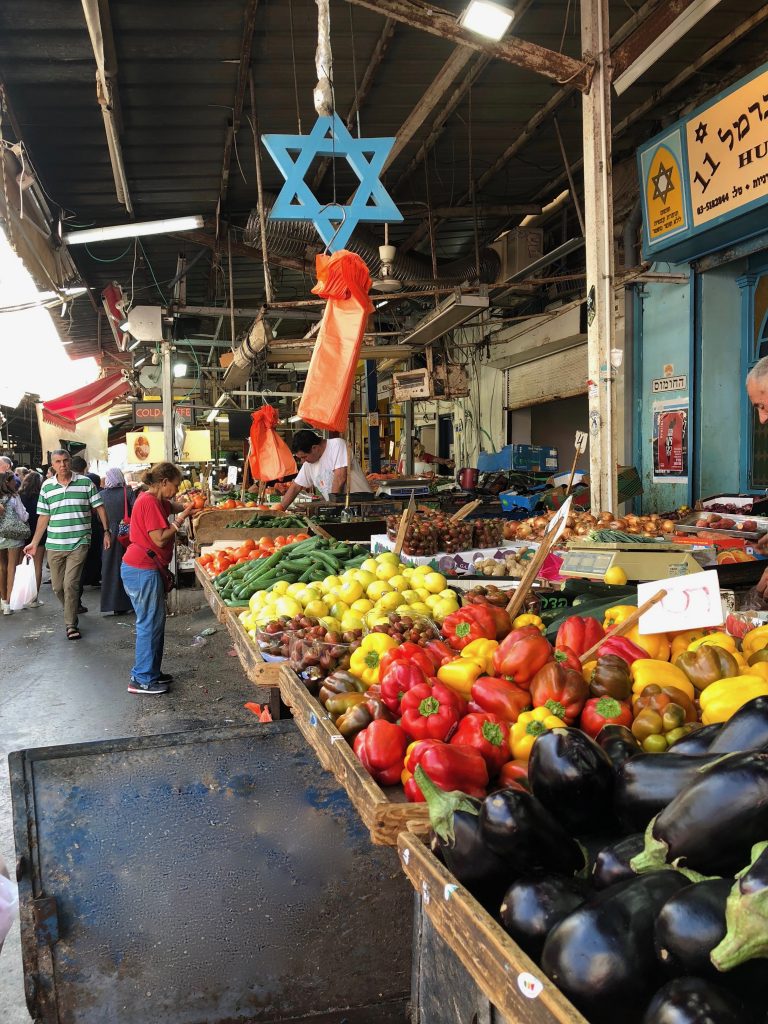
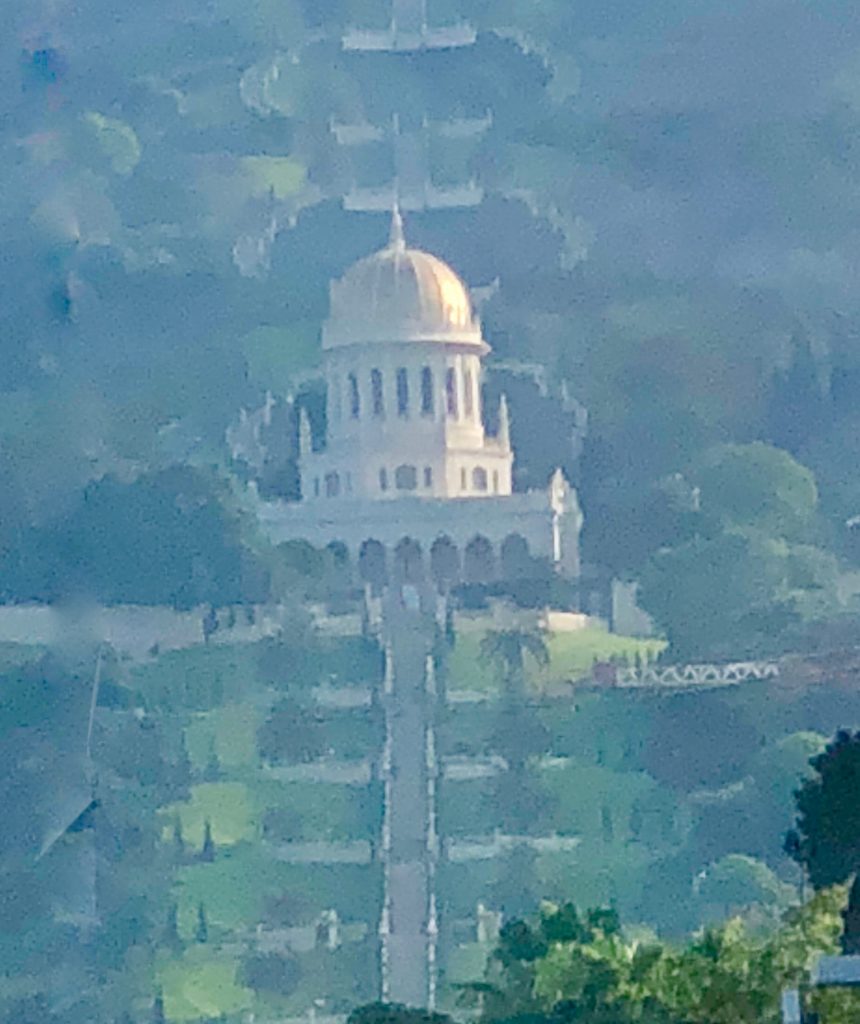
This excursion enabled us to learn about and experience some of the secular history of Israel. We could feel a sense of the ancient along with the hustle-bustle of modern day life. From ancient ruins to the traffic jam on the expressways. Viking Cruises did a great job constructing an inclusive itinerary.




Be the first to comment